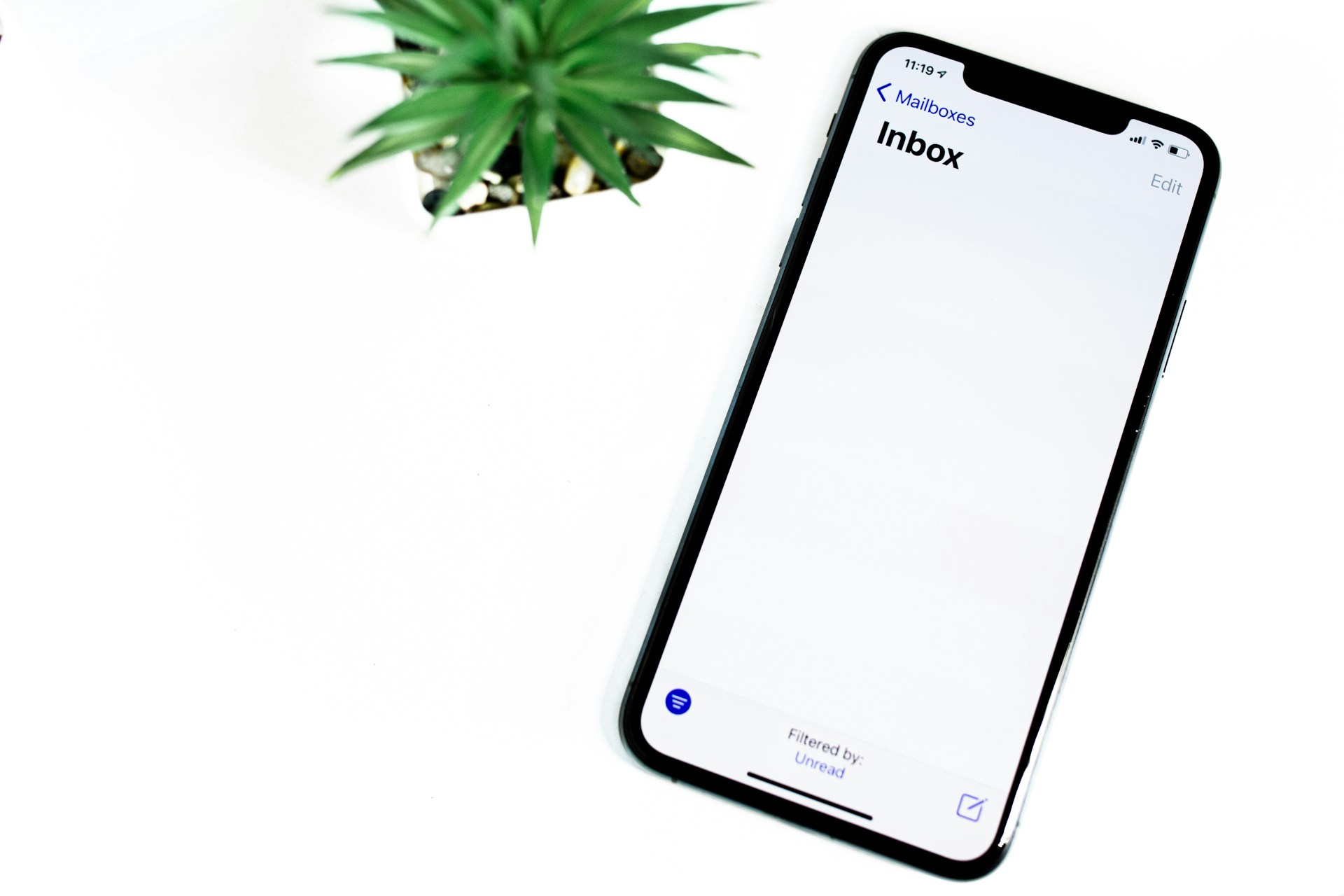Effective communication is paramount for any business, but keeping every employee informed can be a daunting task.
An internal email newsletter is a powerful tool that can disseminate vital information, as well as promote your organization’s culture and nurture a sense of community within it. To help you understand more about this method of communication, we’ll delve into their benefits and explain how to craft your own, including helpful tips and creative ideas to inspire your efforts.
What is an internal newsletter?
Internal newsletters are regularly distributed email communications within your company. Their primary purpose is to inform, engage, and align employees with your organization’s goals, values, and developments. Typically, these emails contain a mix of:
- Company news
- Departmental updates
- Employee spotlights
- Upcoming events
- Relevant industry insights
These communications serve as a centralized hub that informs and connects personnel across all levels with the broader organization.
The benefits of internal newsletters
Keeping your workforce in the loop yields multiple advantages.
Higher employee engagement, motivation, and morale
Not knowing how one’s work impacts organizational success can make them feel disconnected from their employer. A great platform to address this issue is an internal email newsletter.
It’s an excellent option for regularly sharing major developments, as well as recognizing milestones and success stories, which can do wonders for morale and engagement. In fact, 85% of employees say they’re most motivated when management provides regular company updates like this because they’re always aware of what’s happening.
So, acknowledge their contributions and keep them up to date on the company’s progress to nurture a sense of purpose and support employee commitment to their roles.
Increased transparency
Transparency builds trust within your organization. Think of how businesses in dynamic industries undergo changes due to technological advancements or market shifts. Whether it’s alterations to branding, culture, or operations, transformations may require a redefinition of roles, which disrupts your employees’ routines and rattles their job security.
However, internal newsletters let you deliver updates about organizational developments early, then clarify their purpose and how they’ll take place. These create opportunities to alleviate employee worries as well, particularly for those fearing for their livelihoods.
Improved communication
An internal email newsletter streamlines communication for everyone in the company, as it centralizes information into one accessible format and reduces the likelihood of important messages being overlooked or lost.
It’s extremely effective for remote workers as well, since their different locations and time zones can make them feel disconnected from the organization. Almost two-thirds (64%) of them even say they favor email as a channel for receiving company news and updates.
Strengthened company culture
Your organization’s culture plays a central role in cultivating a positive internal brand, and you can consistently promote its mission and values through internal email newsletters.
For instance, they can highlight your company’s social and environmental impact and establish a sense of purpose for your employees’ work. By featuring stellar employees and their contributions, you encourage appreciation for one another’s efforts and create a more supportive environment.
Organizational alignment and consistency
Orienting people across all organizational levels towards an overarching goal can be difficult, especially for larger companies. By regularly discussing the current state of your company’s mission, vision, strategic objectives, and initiatives through internal email newsletters though, you can ensure employees are always on the same page.
How to launch an internal newsletter
Starting an internal newsletter isn’t complicated. Though the process takes some effort, many tools are available that simplify various tasks. To give you a better idea, here’s a basic step-by-step guide.
Step 1: Define your objectives and audience
Before starting a newsletter, you must first determine what you want to achieve. Do you want to provide weekly or monthly company updates? Is it intended for leadership to address managers and staff directly? Or, are you going to use it to recognize your best employees?
You can actually do all of these, so long as you don’t overdo it and specify your audience. For instance, you can share developments that affect the broader organization as well as publicly recognize your top people. However, department-specific updates, like for marketing or HR, may only interest their members.
Step 2: Select your newsletter platform
When choosing a platform for your internal email newsletter, consider your company’s needs. For example, if you want to customize newsletters by department, your platform should allow the creation and maintenance of multiple email lists. Regular delivery, meanwhile, will necessitate scheduling capabilities.
Cost is another factor: Some solutions are expensive and have features you’ll never use; others, meanwhile, are more affordable but don’t offer the capabilities you require. With so many options and criteria to research, we’ve listed a few top-notch services (some of which offer free subscription plans) that you can adopt to build engaging newsletters.
Mailchimp
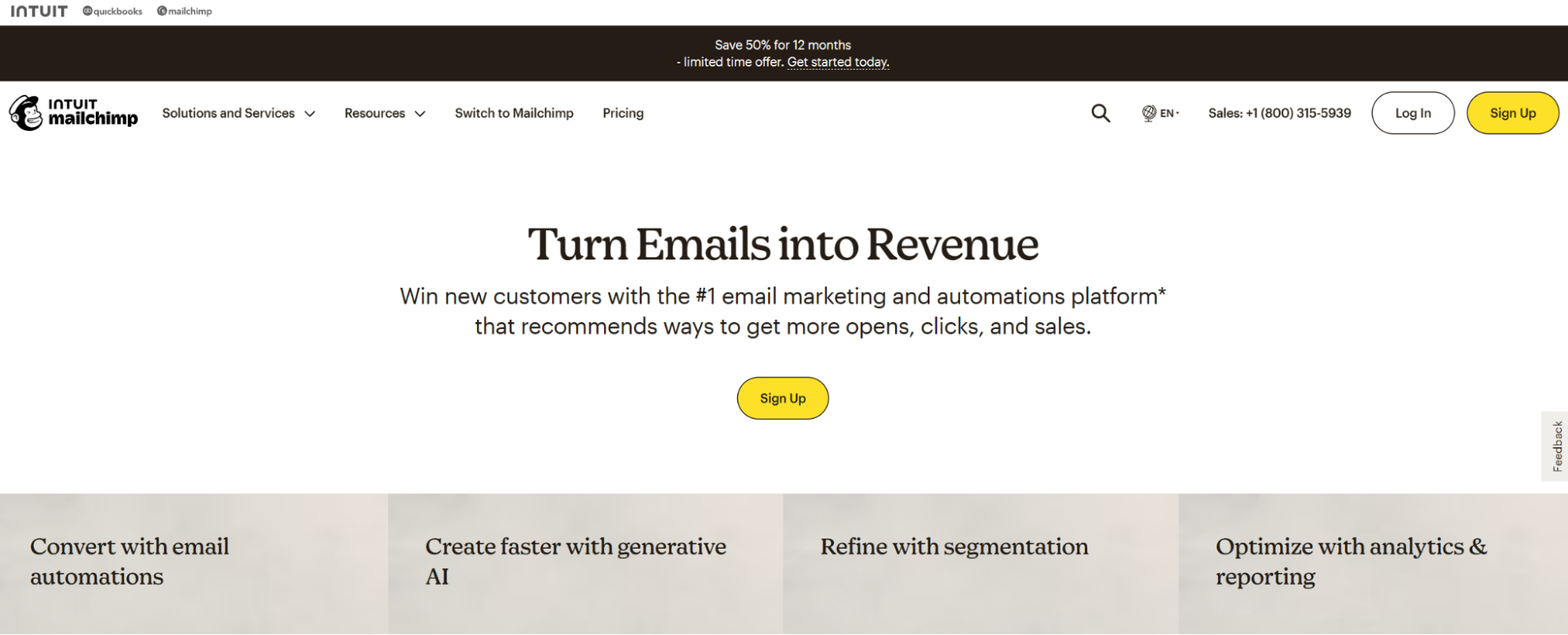
One of the most popular tools for email marketing, Mailchimp can also be extremely useful for internal newsletters. You can easily tailor emails to your audience and measure how they perform to make improvements as needed.
We recommend the service’s cheaper plans, as its most advanced features are more geared towards marketing to extremely specific or massive customer bases rather than employees.
Features:
- AI assistance and automations
- Templates
- Audience management
- A/B testing
- Reporting and analytics
Price: Free to custom pricing
Goodbits
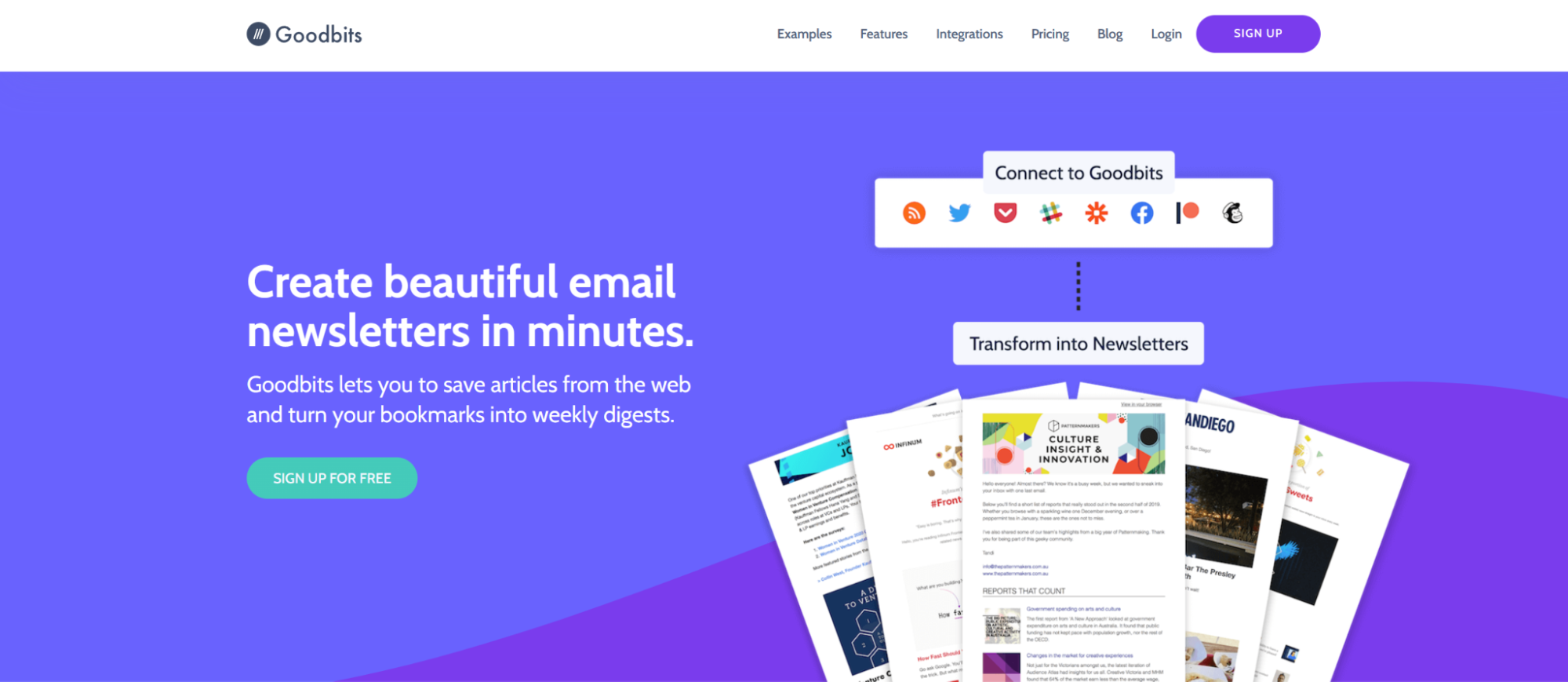
Being designed for creating beautiful email newsletters, Goodbits is great for bolstering your internal communications.
This user-friendly tool lets you build a newsletter without prior coding or design experience and share written content from all over the internet. Since it can automatically collect and organize relevant articles for you, we highly recommend it for its simplicity.
Features:
- Integrates with any email service
- Curates content automatically
- Customizable content blocks and templates
- Live designer
- Team-based content curation
Price: Free to $599/month
Mad Mimi
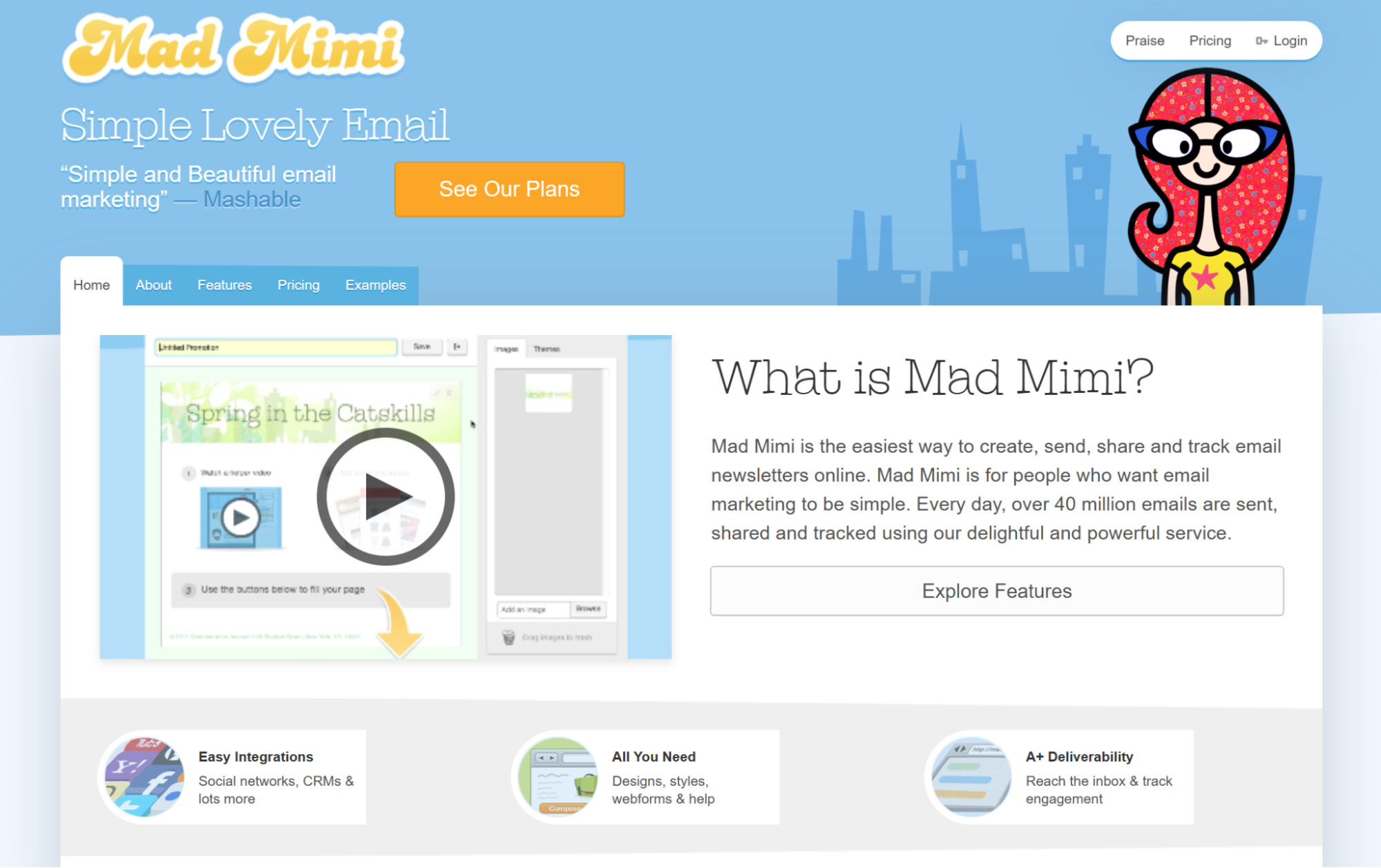
Probably the simplest email newsletter tool on this list, Mad Mimi is built for ease of use. Although it has no free plan, its most basic one allows up to 500 contacts and unlimited emails, so it’s still a cost-effective option.
Features:
- Mobile-friendly emails
- Simple user interface (UI)
- Styles and modules for custom designs
- Save and clone emails
- Integrations and engagement tracking
Price: $10 to $1,499/month
Campaign Monitor
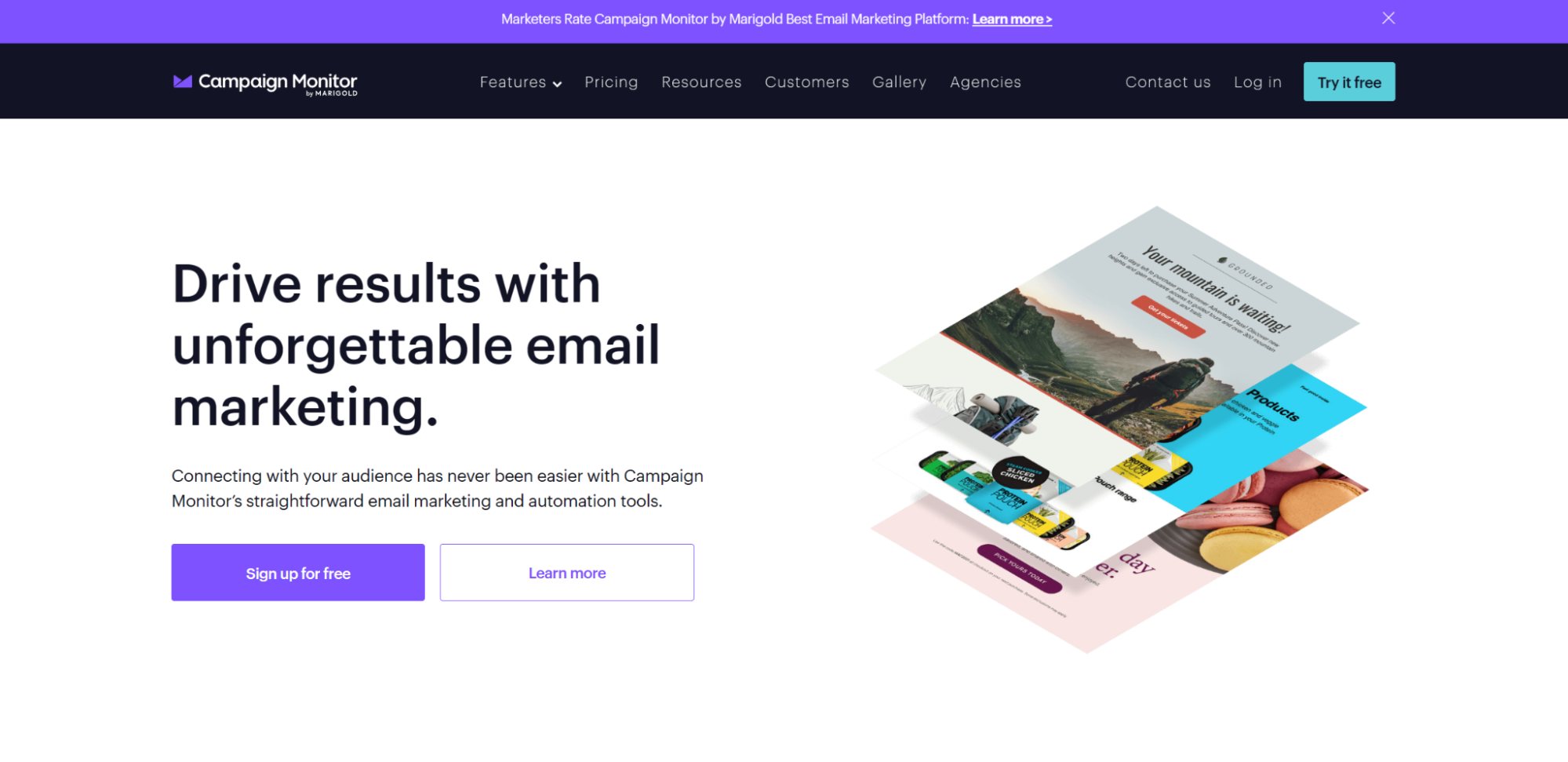
Another popular platform of choice, Campaign Monitor makes newsletter creation a straightforward experience thanks to its drag-and-drop design interface and broad selection of premade templates. It offers advanced capabilities as well to accommodate more complex needs.
Features:
- Drag-and-drop email builder
- Premade and custom templates
- Audience segmentation and personalization
- Email automations and analytics
- AI writer
Price: $11 to $989/month, or you can pay per campaign
Constant Contact
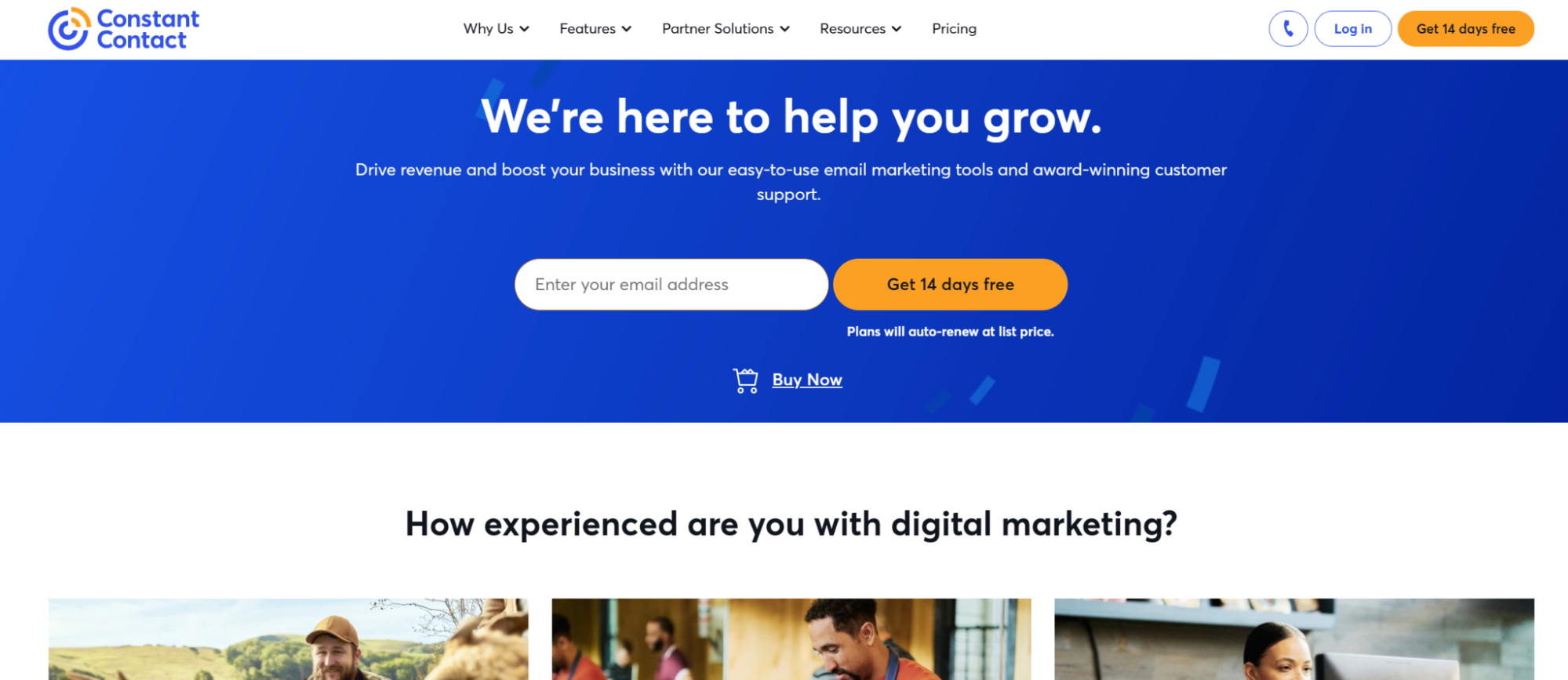
Although Constant Contact is primarily geared towards email marketing, it’s a stellar tool for internal newsletters as well. It possesses a nice balance of features common among other platforms but stands out due to its comprehensive email tracking software.
Features:
- Drag-and-drop editor
- Wide selection of mobile-friendly templates
- AI content generator and other automations
- Engagement reporting and segmentation
- Click-tracking heat maps
Price: $12/month to custom pricing
Step 3: Determine the logistics
Once you’ve chosen an appropriate platform for your internal email newsletter, it’s time to establish the specifics of its distribution. To do that, answer these questions:
- Who should receive it?
- How often should the newsletter go out?
- What is its main purpose?
- How many articles should be included?
- How long or short should it be?
Settle the logistics of your newsletter early to ensure it’s consistently delivered to the right people at the right time for maximum engagement.
Step 4: Draft a template
Depending on your chosen email platform, this step should be simple. Design a template that combines aesthetics and readability. It should also reflect your company’s branding and align with your newsletter’s objective.
For instance, if you want to share important dates, include a calendar with marked events that link to relevant information. Or, for engaging company updates, incorporate stunning visuals.
Step 5: Gather content
This step will take the most effort since the content will make or break your newsletter. The aim is to collect relevant pieces, ranging from company updates and employee features to industry news and upcoming events.
You need to keep these communications fresh every time you send out a new one; delivering almost-identical emails in succession may cause people to disengage and stop opening them. So, carefully curate each issue. They should be up to date, relevant to your recipients, and align with your organization’s current developments.
For example, technological advancements in your industry could impact how your company operates, so you’d want to send the news to everyone. New sales practices, however, should only be sent to those they apply to, like frontline staff.
Step 6: Have your newsletter proofread
Before you send out the finished product, have a select few read the newsletter first. We recommend showing it to leaders and managers, as they can help determine whether your content is relevant to their teams.
Have it checked for any errors as well and ask for suggestions that can improve the communication’s quality. Once this step is complete, you can launch your internal newsletter!
Step 7: Establish a feedback mechanism
A layer of feedback may already be in place before you publish your newsletter, but your best source of criticism is the readers themselves. To gather their opinions effectively, establish a feedback system.
For instance, you can have a call to action (CTA) at the bottom that says, “If you have any questions, want to see something in the next issue, or spot any errors, just leave a comment below!”
The opinions you receive after you release your newsletter will help you understand what employees want and identify areas for improvement.
Step 8: Monitor internal newsletter metrics and adjust your strategy
Besides the feedback you collect before and after sending out your newsletters, you can hone in on their effectiveness by tracking key performance indicators (KPIs). Based on the data these barometers provide, you can make adjustments to your internal communication strategies. Three important metrics you should pay special attention to are open rate, click-through rate, and average time on page.
Open rate
This KPI measures the percentage of recipients who open your newsletter, which helps you gauge reach and the potency of your subject lines.
Here’s how you find it: (Total people who opened the newsletter ÷ Total people who received the newsletter) x 100
However, no open rates are 100% accurate since there are factors that affect how emails are counted as “opened.” For example, when the images within the email fail to load or aren’t received by a reader, they may be overlooked.
Click-through rate (CTR)
CTR refers to the percentage of recipients who click on links within your newsletter. It essentially indicates engagement and interest.
Typically, it’s calculated using this formula: (Total clicks or unique clicks ÷ Number of delivered emails) x 100
So, if you send 500 newsletters and it garners 100 clicks, the math would look like: (100 total clicks ÷ 500 delivered newsletters) x 100 = 20% CTR
This also helps you measure the success of your A/B testing (i.e., what newsletter variants gather more clicks).
Average time on page
This metric determines whether or not recipients find your content engaging and interesting. It does so by measuring the average time your employees spend viewing your newsletter’s page.
For instance, low numbers reveal that readers don’t find your content fascinating. Extremely high figures, however, should be approached carefully, as time on page can also be recorded while the newsletter is open in the background as a tab.
Internal newsletter best practices
Now that you understand how to launch a newsletter, here are some helpful tips to bolster its effectiveness.
Keep it concise
Brevity is critical, as people typically have short attention spans, especially when it comes to newsletters: A study by the Nielsen Norman Group dating back to 2006 found that the average time an individual would spend on one after opening it was only 51 seconds!
Your employees also only have so much time in their workdays, so be respectful of it. Keep your internal newsletter succinct and to the point.
Use engaging visuals
A workaround that addresses the issue of short attention span is the use of multimedia elements, such as videos, infographics, or crisp photos.

Image: GetResponse
In terms of keeping readers engaged, simply including pictures goes a long way; inserting a graphic into your email significantly boosts open rates and CTRs.
Include interactive elements
Interactive elements can compel employees to engage with your newsletter content by encouraging participation and feedback.
Let’s say you publish a piece discussing how to make your organization a desired workplace. You can then add a poll or survey that captures what employees think would improve their work environments.
Personalize content
You can’t expect people to view content they find uninteresting. To avoid this issue and maximize engagement, tailor your newsletter to employee needs and preferences. Personalized subject lines alone can be impactful, making emails 26% more likely to be opened.
Seek employee input
We’ve mentioned feedback multiple times because it’s that important. Your employees are your best source of constructive criticism, so ask for their suggestions. It not only improves your newsletter but also encourages a culture of collaboration.
Make it mobile-friendly
Over one-third (35%) of business professionals view emails on their mobile devices. To accommodate this user base, optimize your newsletter for mobile.
For example, ensure fast page load times by compressing images and use minimalistic layouts for easy reading. That allows employees to experience seamless reading through their smartphones or tablets.
Maintain a consistent schedule
Sustaining a constant level of engagement can be difficult, as it requires a steady amount of momentum. Although regularly creating or gathering new content requires a lot of effort, stick to a regular distribution schedule — be it weekly, monthly, or quarterly — to keep employees engaged.
Measure performance and adapt
As mentioned earlier, relying on feedback may not be enough; to better understand your newsletter’s effectiveness, track and analyze key metrics as well. For example, how do your open rates and CTRs differ between topics? Does adding visual aids affect your results, or do you need to change the subject matter entirely?
By regularly monitoring these benchmarks and comparing them to previous newsletter iterations, you can identify areas in need of improvement and ensure higher-quality content going forward.
16 Engaging internal newsletter ideas
Major company developments aren’t everyday occurrences, so content can easily dry up and impede a frequent publishing schedule. That’s why it’s necessary to gather a healthy variety of content. To help you maintain a regular cadence, here are some ideas you can use for your email newsletters.
1) Employee spotlights
Recognition is a strong engagement driver. In fact, employees who believe their contributions and achievements will be acknowledged are 2.7 times more likely to be engaged.
Your internal newsletter is a prime opportunity to spotlight these individuals. Opportunities for widespread acclaim within your organization can, in turn, encourage others to do better. It also establishes appreciation as a key component of your company culture.
2) Department updates
Knowing what’s going on with other company sectors can facilitate smooth cross-functional collaboration. You can foster that awareness by sharing departmental updates and milestones in your newsletter.
3) Offer guest writing or editing opportunities
To attract more attention and engagement, allow employees to contribute their own words to your newsletter. Give them the chance to become guest writers or editors and let them discuss whatever topic piques their interest.
Every employee has a unique personality, so every guest piece should add its own twist to your newsletter and provide readers a new experience each time they open it.
4) Wellness tips and challenges
Employees who are physically or mentally unwell can’t be expected to be productive. You can, however, promote their overall well-being in your newsletter content. For example, you could publish pieces that provide work-life balance tips, fitness challenges, mindfulness exercises, or healthy recipes.
5) Industry insights
Technological and market changes can disrupt any industry, and those shifts can then shake up organizations. To keep employees informed about major developments, stay on top of and share relevant industry news, trends, and insights.
6) Polls and surveys
To reiterate, interactive elements are excellent tools for gathering feedback. Transparency is a two-way street; since employees must listen to you, you should listen to them as well.
By seeking employee input, you show you’re open to hearing their concerns and meeting their needs. Those efforts can even inform your decision-making and nurture employee satisfaction.
7) Fun facts and trivia
Your newsletter doesn’t always have to be serious; employees may even find it bland after a while. Inject humor and levity by adding fun facts, trivia, or themed content related to your industry, company culture, or current events. These elements entertain readers, pique their curiosity, and prevent them from disengaging.
8) Social initiatives
Purpose-driven work can urge employees to invest more in their roles. Fostering intrinsic value is critical, as 70% of employees say their work defines their sense of purpose. However, only 18% believe they achieve the level of purpose they desire, while 62% say they obtain some sense of purpose but want more.
Your newsletter can help personnel boost their internal satisfaction: Use it to feature events and initiatives geared towards corporate social responsibility (CSR), community service, or volunteer opportunities. Incorporate elements that allow readers to register and join as well. Then, share stories, photos, and updates of employees who participate and highlight how your company is making a positive impact in the communities it serves.
9) Virtual coffee breaks
This strategy in particular should help your remote workers feel connected to the organization. Hosting virtual coffee breaks or informal online meetups gives them opportunities to get to know each other and build chemistry with their colleagues.
For your part, share photos, anecdotes, and highlights from these sessions to encourage them to socialize.
10) New hire features
Your newsletter can even be a strategic part of your company’s employee onboarding process. By crafting short write-ups about your new hires, you foster a more open and accepting environment and compel existing workers to welcome fresh talent warmly into the organization. Additionally, placing a link to their LinkedIn profiles allows them to connect instantly with their new colleagues.
11) Do-it-yourself (DIY) corner
A newsletter can cultivate common interests among your employees. For instance, feature fun and creative projects like arts and crafts to tempt employees to try something new with their co-workers during off hours.
12) Home office features
Hybrid or remote team members have fewer chances to interact with their colleagues. So, to make them feel more included in and connected to your organization, spotlight some of their home offices.
Let employees share their fun work setups and personalities, or even show off their pets! This enjoyable section of your newsletter can help bridge the gap between your on-site and remote employees.
13) Book club recommendations
Consider starting a book club within your organization and feature recommendations, reviews, and discussions in your newsletter.
This is a great way to encourage employees to read, talk about their perspectives, and maintain engagement. Industry-related subject matter can boost personal and professional development as well.
14) Customer success stories
Customers can be a strong motivator for employees to do well. Displaying the impact your company has had on clients’ lives validates your workforce’s efforts, gives their work more meaning, and serves as an opportunity to praise them for a job well done.
15) User-generated content (UGC)
Similar to customer success stories, people praising your company on social media can further substantiate the payoff your employees’ contributions and achievements create.
Grab comments from Facebook, X (formerly Twitter), Instagram, or TikTok and showcase them in your newsletter to strengthen the sense of purpose behind your personnel’s hard work and compel them to do well in their role.
16) Birthdays and anniversaries
Not everyone likes having attention on their birthdays or work anniversaries. Most, however, appreciate their company celebrating or recognizing these important dates in a simple way. So, add a personal and fun touch to your newsletter by including some brief well wishes on employees’ birthdays or anniversaries.
Wrapping up — Improve communication and boost engagement through an internal newsletter
In dynamic industries, effective organizational communication is essential to ensure alignment, engagement, and productivity. An internal email newsletter can strengthen those aspects, as it provides a centralized and accessible source of content that promotes transparency, community, and a positive work culture.
Starting your own isn’t complex but does need careful planning. To build a successful newsletter, remember to:
- Settle on your audience and seek their input
- Keep your newsletter concise but utilize visuals and interactive elements as well
- Include a healthy variety of creative, up-to-date content
- Maintain a consistent schedule
- Measure performance and refine your strategy
By leveraging the full potential of a well-crafted internal newsletter, you pave the way for a more connected, informed, and motivated workforce.

